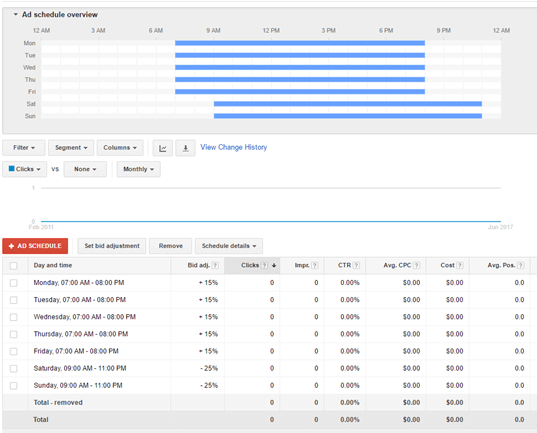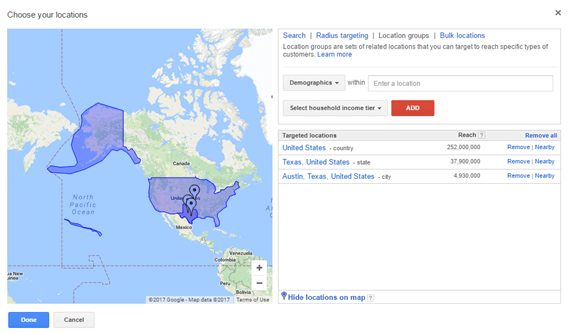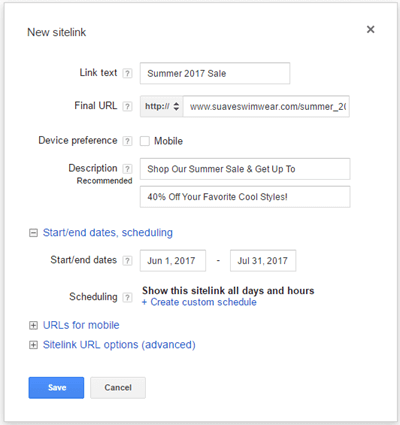
While there’s no secret recipe for the perfect PPC strategy, we can often adjust key factors to make our campaigns more appealing to our target audience. And as crucial as research and planning may be, it’s rare (if not impossible) to produce PPC campaigns that have the perfect balance of ingredients right out of the gate. In fact, PPC is as much about testing and optimizing as it is about creating the ads in the first place.
Observing your data and making adjustments based on new information will help you increase your Return On Ad Spend (ROAS) over time. Below, we’ve put together six quick ways to optimize your ads for winning PPC campaigns.
1. Review Audience Search Terms
While you’ve already performed keyword research prior to launching your ads, customers often search in ways that surprise us. Fortunately, you can catch some of these surprises within your Google Ads dashboard.
On a regular basis, head into your dashboard and view the search terms people are clicking on to get to your ads. If you spot anything weird or irrelevant, add it to your campaign as a negative keyword so you don’t have to pay for those clicks in the future. Conversely, if there are search terms you’re not bidding on that are relevant to your site, you can add those to your campaigns.
2. Take Advantage of Device Bidding
Google Ads lets you bid differently on ads/keywords based on the device they’re sent to (desktop, tablet, and mobile). This gives you a great chance to review the behavior of your audience on each type of device so you can make more fine-tuned decisions about where to direct your ad budget.
For example, if you notice that your desktop users have a higher conversion rate, you might decide to increase your bids for low-funnel, high-converting keywords for desktop users. You mobile ads, meanwhile, might receive a higher portion of top-funnel, informational keyword bids.
3. Save on Spend With Dayparting
You can also change the way you bid according to different hours and days of the week. For some businesses, this is a handy way to avoid spending money on ads during times when customers aren’t shopping. For example, if you’re a B2B company that relies on in-person meetings and phone calls, you might decide to decrease your bids on weekends and during hours when you’re not open.
To get started, take a look at the information in your Ad Schedule Overview:

Note your most and least competitive or high-converting periods, and create a schedule that’s more competitive during your high-traffic/conversion periods and more passive when activity dies down.
4. Use Location Targeting
Last but not least, Google lets you change your bidding based on geography. Using location targeting, you can segment out different targeted ads based on countries, states, cities, zip codes, or even the radius around an address. Adjust these to ensure that your ads show up in the correct geographical areas. If you are unable to ship to Hawaii and Alaska, for example, you can take those states out of your location targeting. And if you don’t ship internationally, you can exclude other countries from your campaigns.
On the flip side, you may choose to increase your bids in certain locations based on who your typical target shopper is or whether you have a brick-and-mortar. If you do have a local brick-and-mortar, you can increase your bids in the areas around your store to help encourage foot traffic. You might also decide to look at the income demographics of the locations that are sending traffic your way so you can target additional locations where those demographics live.

5. Create Sitelink Extensions
Sitelinks are ad extensions that take people to specific internal pages on your site. They’re a great way to get better visibility in the SERPs and provide a more customized user experience for the people viewing your ads. Sitelinks appear underneath the ad’s main search result, and they can be listed in a single line, stacked, or stacked with a description.

Ultimately, it’s up to Google to decide when a sitelink appears—and they don’t show them 100% of the time. To increase the odds that Google will want to show yours, you’ll need to prove they provide a better user experience for Google’s users (which are also your own). Create a few sitelinks that may be useful to a variety of visitors, then make sure the landing pages for those sitelinks are as relevant as possible.

6. Run A/B Tests
Because observing your data and making adjustments will lead to optimized ads over time, you can expedite the process by giving yourself more data to work with. PPC ads, with their limited character count and fairly consistent requirements, are perfect for A/B testing. Run multiple versions of each ad at once, making small changes to the headline, CTA, or ad copy to see what users respond to the most. Whenever you find a clear winner, use your winner as the new “control” and test it against another experiment.
In Conclusion
While having perfectly optimized ads may seem like a lofty goal for any paid search strategy, you can get yours close. All it takes is time, meaningful data, and a willingness to adjust based on new information.











